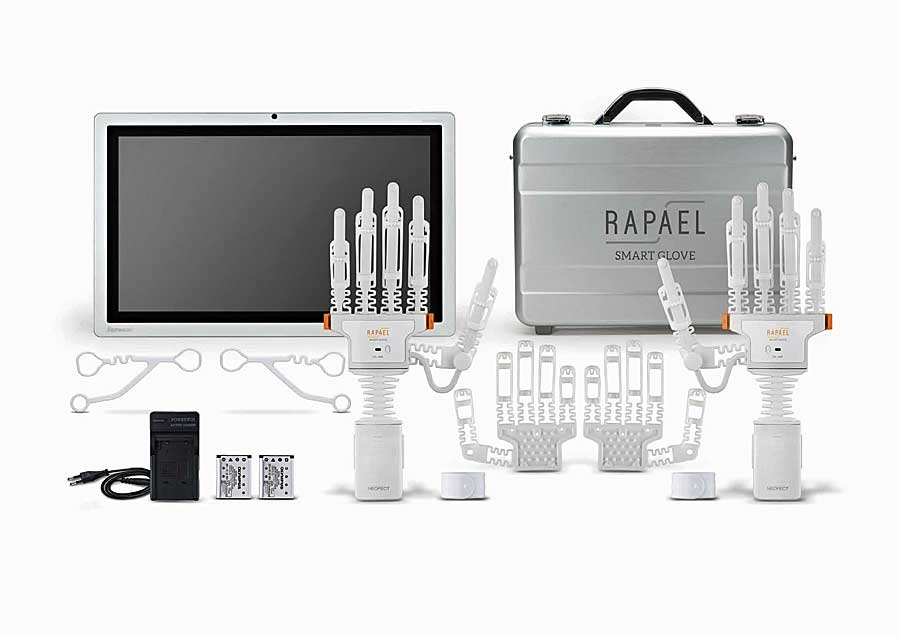Exhibited at CE Week in Manhattan, NYC, July 2017, the Raphael Smart Glove from Neofect is designed to induce neuroplasticity for hand function in patients with brain damage. The wearable device employs a variety of sensors and ultra-low-power EnergyLite 32-bit microcontrollers (MCUs). Training involves wearing the glove, connecting to the RAPAEL app, and proceeding to play the rehabilitation games.
Sensors In Play
Raphael uses a bending sensor, essentially a variable resistor that changes value as it’s bent. It is a nine-axis movement and position sensor with three acceleration channels, three angular rate channels, and three magnetic field channels that measure wrist movements. These interface with a computer system that tracks and measures the amount of each finger movement.

Fun & Games
As a rehabilitation solution, Raphael offers a variety of motion tasks involving the hand, fingers in combinations, and the arm. A learning schedule algorithm automatically adjusts to the optimal level of difficulty to balance challenge and motivation.
The computer application provides a range of bio-mechanical evaluation such as passive and active range of motion and motion analysis of the fingers and hand. Evaluations are used to determine the difficulty level of the initial exercise. Then the fun starts. A learning schedule algorithm automatically adjusts optimal level of difficulty on a game by game basis so as to balance both challenge and motivation.
After the patient plays the games and performs the tasks, he or she can interpret their individual performance immediately afterwards via numeric scores. Performance result shows patient’s current state, exercise progress and improvement by analyzing performance while exercising. To learn more, watch a video demo as well as a tasks demo. Neofect has offices in South Korea, Germany, and in the US. ~MD
NEOFECT
Burlingame, CA
415-513-1608